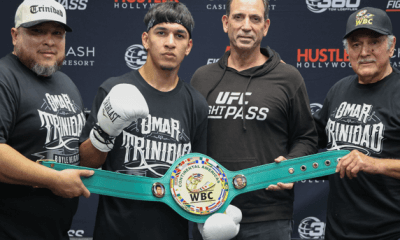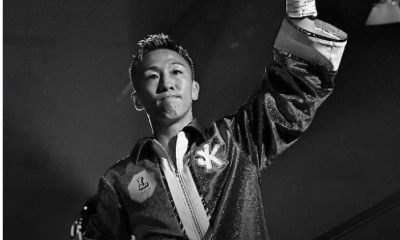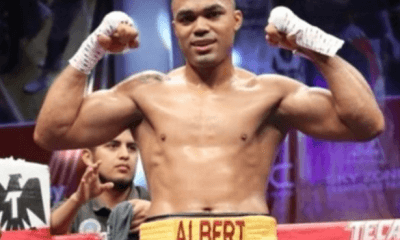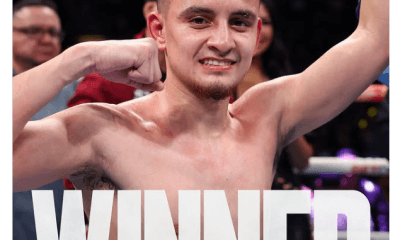Featured Articles
The Hauser Report: Some Thoughts on Mike Tyson vs. Jake Paul
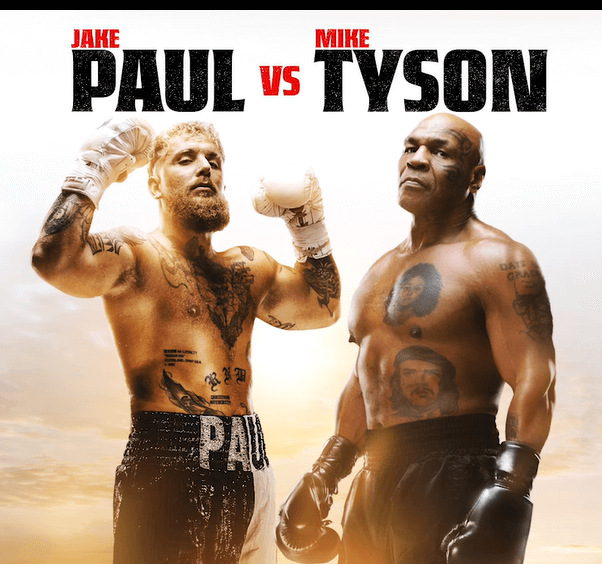
Jake Paul boxed his way to a unanimous decision over Mike Tyson at AT&T Stadium in Arlington, Texas, on Friday night. The bout, streamed live on Netflix, was one of the most-watched fights of all time and, in terms of the level of competition, boxing’s least-consequential mega-fight ever.
We’re living in a golden age for spectator sports. Sports generate massive amounts of money from engaged fan bases and are more popular now than ever before. Today’s athletes are more physically gifted, better conditioned, and more skilled than their predecessors. Their prowess is appreciated and understood by tens of millions of fans.
Not so for boxing. For the sweet science, this is an era of “fools’ gold.” Yes, fighters like Oleksandr Usyk, Canelo Alvarez, Terence Crawford, and Naoya Inoue bring honor to the sport. But boxing’s fan base has dwindled to the point where most people have no idea who the heavyweight champion of the world is. The sport’s dominant promoter has a business model that runs hundreds of millions of dollars a year in the red. And most fights of note are contested behind a paywall that shrinks the fan base even more. Few sports fans understand what good boxing is.
Mike Tyson is 58 years old. Once upon a time, he was the most destructive boxer in the world and “the baddest man on the planet.” Prior to last Friday night, he hadn’t fought in nineteen years and hadn’t won a fight since 2003.
Jake Paul is a 27-year-old social media personality who wasn’t born when Tyson lost his aura of invincibility at the hands of Buster Douglas. Paul began boxing professionally three years ago and, before fighting Tyson, had compiled a 10-1 (7 KOs) record against carefully chosen opponents.
Netflix has roughly 283 million subscribers globally, 84 million of them in North America. Recently, it made the decision to move into live sports. On December 25, it will stream the National Football League’s two Christmas games on an exclusive basis.
Netflix took note of the fact that Tyson’s 2020 exhibition against Roy Jones drew 1.6 million pay-per-view buys and concluded that Tyson-Paul had the potential to be the most-viewed fight of all time. It purchased rights to the fight as an attention grabber and subscription seller for (a best-estimate) $40 million.
Tyson-Paul was originally scheduled for July 20. A compliant Texas Department of Licensing and Regulations sanctioned the bout as an official fight, not an exhibition. In deference to Tyson’s age, the fighters agreed that the match would be contested over eight two-minute rounds (women’s rules) with 14-ounce gloves (heavyweight gloves normally weigh ten ounces).
But on May 26, Tyson became nauseous and dizzy while on a flight from Miami to Los Angeles and needed medical assistance for what was later described as a bleeding ulcer. The fight was rescheduled for November 15. Later, Tyson described the incident on the plane as follows: “I was in the bathroom throwing up blood. I had, like, eight blood transfusions. The doctor said I lost half my blood. I almost died. I lost 25 pounds in eleven days. Couldn’t eat. Only liquids. Every time I went to the bathroom, it smelled like tar. Didn’t even smell like shit anymore. It was disgusting.”
Does that sound like a 58-year-old man who should be fighting?
As Eliot Worsell noted, Tyson-Paul contained all the elements of a successful reality show. “There are for a start,” he wrote, “celebrities involved, two of them. One is ‘old famous’ and the other ‘new famous’ and both bring large audiences with them. They need only tap something on their phone to guarantee the entire world pays attention. And that, in this day and age, is all you really need to green light a project like this.”
But Worsell added a word of caution, observing, “This has been the story of Jake Paul’s pro boxing career to date; one of smoke and mirrors, one of sycophants telling him only what he wants to hear. He has been fed a lie just as Mike Tyson is now being fed a lie, and on November 15 they will both play dress-up and be watched by millions. They will wear gloves like boxers and they will move like boxers – one hampered in this quest by old age and the other by sheer incompetence – and they will together make ungodly sums of money.”
There was early talk that 90,000 fans would jam AT&T Stadium on fight night. Initially, ticket prices ranged from $381 to $7,956. And those prices were dwarfed by four tiers of VIP packages topped by a two-million-dollar “MVP Owner’s Experience” that included special ringside seating at the fight for six people, luxury hotel accommodations, weigh-in and locker room photo ops, boxing gloves signed by Tyson and Paul, and other amenities.
But by Monday of fight week, ticket prices had dropped to as little as $36. Ringside seats were available for $900. And the press release announcing the eventual MVP Owner’s Experience sale backtracked a bit, saying the package was “valued at $2 million” – not that the actual sale price was $2 million. It also appeared that the purchase price included advertising for the law firm that purchased the package since the release proclaimed, “Just as every fighter in the ring stands to represent resilience, grit, and the pursuit of victory, TorkLaw stands in the corner of the people, fighting for justice and empowering those who need it most.”
That said, the fight drew 72,300 fans (inclusive of giveaway tickets) to AT&T Stadium. And the live gate surpassed $18 million making it the largest onsite gate ever in the United States for a fight card outside of Las Vegas. More than 60 million households watched the event live around the world.
The undercard featured a spirited fight between Mario Barrios and Abel Ramos that ended in a draw. Then came the second dramatic showdown between Katie Taylor and Amanda Serrano.
Taylor-Serrano II was for all four major sanctioning body 140-pound belts. Two years ago, Katie and Amanda did battle at Madison Square Garden on a historic night that saw Taylor emerge with a controversial split-decision win. Katie is now 38 years old and her age is showing. Amanda is 36. Taylor was an early 6-to-5 betting favorite in the rematch but the odds flipped late in Serrano’s favor.
Amanda began Taylor-Serrano II in dominating fashion and wobbled Katie just before the bell ending round one. That set the pattern for the early rounds. Serrano looked like she could hurt Taylor, and Taylor didn’t look like she could hurt Serrano.
Then in round four, Serrano got hurt. A headbutt opened a gruesome gash on her right eyelid. As the bout progressed, the cut became more dangerous. From an armchair perspective, it looked as though the fight should have been stopped and the result determined by the judges’ abbreviated scorecards. But the ring doctor who examined Serrano allowed it to continue even though the flow of blood seemed to handicap Amanda more and more with each passing round.
In round eight, referee Jon Schorle took a point away from Taylor after the fourth clash of heads that he thought Katie had initiated. By then, Serrano’s face resembled a gory Halloween mask and the bout had turned into a non-stop firefight. Each woman pushed herself as far as it seemed possible to go.
In the eyes of most observers, Serrano clearly won the fight. This writer scored the bout 96-93 in Amanda’s favor. Then the judges had their say. Each one favored Taylor by a 95-94 margin.
“My God!” blow-by-blow commentator Mauro Ranallo exclaimed after the verdict was announced. “How does one rob Amanda Serrano after a performance like that?”
In keeping with the hyperbole of the promotion, one might say that it was the most-watched ring robbery (although not the worst) in boxing history.
CompuBox is an inexact tabulation. But there’s a point at which the numbers can’t be ignored. According to CompuBox, Serrano outlanded Taylor in nine of ten rounds with an overall 324-to-217 advantage in punches landed.
From a boxing standpoint, Taylor-Serrano II made the evening special. Casual fans who don’t know much about the sweet science saw a very good fight. But they also saw how bad judging undermines boxing.
Meanwhile, as good as Taylor-Serrano II was, that’s not what Netflix was selling to the public. Jake Paul’s most recent events had engendered disappointing viewer numbers. This one was a cultural touchstone because of Tyson.
Paul has worked hard to become a boxer. In terms of skills, he’s now a club fighter (which is more than 99.9 percent of the population could realistically dream of being). So, what happens when a club fighter fights a 58-year-old man who used to be great?
Jack Johnson fought until the age of 53, losing four of his last six bouts. And the two he won were against opponents named Rough House Wilson (who was disqualified in what would be his only recorded professional fight) and Brad Simmons (who was barred from fighting again in Kansas because he was believed to have thrown the fight against Johnson).
Larry Holmes fought until age 52, knocking out 49-year-old Mike Weaver at age 51 and winning a unanimous decision over Eric Esch (aka Butterbean) in his final bout.
Paul was a 2-to-1 betting favorite. Serious PED testing for the fight was a murky issue but seems to have been minimal. Taylor and Serrano underwent VADA testing in advance of their bout. Tyson and Paul didn’t.
Tyson weighed in for the contest at 228.4 pounds; Paul at 227.2 (well over his previous high of 200). Following the weigh-in, Mike and Jake came face to face for the ritual staredown and Mike slapped Jake. But the incident was self-contained with no ripple effect and had the feel of a WWE confrontation.
That raised a question that was fogging the promotion: “Would Tyson vs. Paul be a ‘real’ fight or a pre-arranged sparring session (which was what Tyson vs. Roy Jones appeared to be)?”
That question was of particular note because sports betting is legal in 38 states and 31 of them were allowing wagers on the fight.
Nakisa Bidarian (co-founder of Paul’s promotional company) sought to lay that issue to rest, telling ESPN, “There’s no reason for us to create a federal fraud, a federal crime. These are pro fights that consumers are making legal bets on. We have never and we’ll never do anything that’s other than above board and one hundred percent a pro fight unless we come out clearly and say, ‘Hey, this is an exhibition fight that is a show.'”
Tyson looked old and worried during his ring walk and wore a sleeve on his right knee. The crowd was overwhelmingly in his favor. But it’s an often-repeated truism that the crowd can’t fight. And neither could Mike.
Once upon a time, Tyson scored nine first-minute knockouts in professional fights. Not first-round. First-minute.
Against Paul, “Iron Mike” came out for round one as hard as he could (which wasn’t very hard) while Jake kept a safe distance between them. Then Tyson tired and took all the air out of the fight. By round three, he was in survival mode with his head tucked safely behind his 14-ounce gloves. And Jake didn’t have the skills to hurt him.
The CompuBox numbers favored Paul by a 78-to-18 margin in punches landed. In other words, Tyson landed an average of two punches per round. The judges’ scores were 80-72, 79-73, 79-73 in Jake’s favor. It was a “real” fight but a bad one.
“I love Mike Tyson,” Terence Crawford posted on X afterward. “But they giving him too much credit. He looked like trash.”
Prior to the bout, Tris Dixon wrote, “Tyson-Paul is a weird event, and I can’t think of anything even remotely like it in terms of the level of fighters, celebrity, and their ages. The event is unique, and morally and ethically it is questionable. It is a cynical cash grab. I can’t see it being particularly entertaining as a high-level sporting event. But I’m sure once it starts you won’t be able to take your eyes off it.”
All true. But let’s remember that there was a time when Mike Tyson was universally recognized as the best fighter in the world. Not many people in history have been able to say that.
—
Thomas Hauser’s email address is thomashauserwriter@gmail.com. His most recent book – MY MOTHER and me – is a personal memoir available at www.amazon.com/My-Mother-Me-Thomas-Hauser/dp/1955836191/ref=sr_1_1?crid=5C0TEN4M9ZAH&keywords=thomas+hauser&qid=1707662513&sprefix=thomas+hauser%2Caps%2C80&sr=8-1
In 2004, the Boxing Writers Association of America honored Hauser with the Nat Fleischer Award for career excellence in boxing journalism. In 2019, Hauser was selected for boxing’s highest honor – induction into the International Boxing Hall of Fame.
To comment on this story in the Fight Forum CLICK HERE
-

 Featured Articles2 weeks ago
Featured Articles2 weeks agoThe Hauser Report: Zayas-Garcia, Pacquiao, Usyk, and the NYSAC
-

 Featured Articles2 weeks ago
Featured Articles2 weeks agoOscar Duarte and Regis Prograis Prevail on an Action-Packed Fight Card in Chicago
-

 Featured Articles6 days ago
Featured Articles6 days agoThe Hauser Report: Cinematic and Literary Notes
-

 Book Review2 days ago
Book Review2 days agoMark Kriegel’s New Book About Mike Tyson is a Must-Read
-
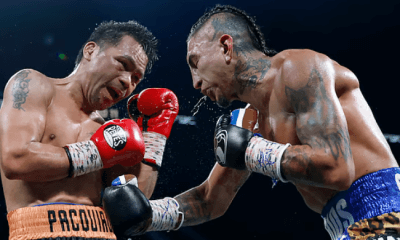
 Featured Articles4 weeks ago
Featured Articles4 weeks agoManny Pacquiao and Mario Barrios Fight to a Draw; Fundora stops Tim Tszyu
-
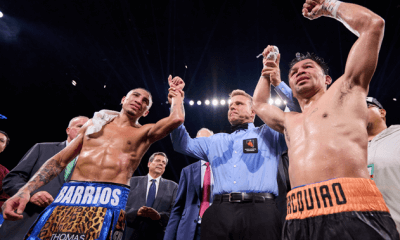
 Featured Articles3 weeks ago
Featured Articles3 weeks agoArne’s Almanac: Pacquiao-Barrios Redux
-

 Featured Articles2 weeks ago
Featured Articles2 weeks agoRemembering Dwight Muhammad Qawi (1953-2025) and his Triumphant Return to Prison
-
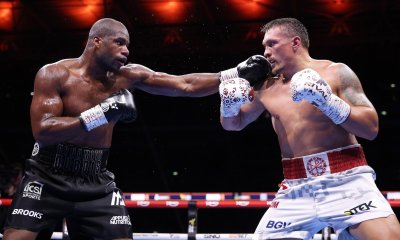
 Featured Articles4 weeks ago
Featured Articles4 weeks agoOleksandr Usyk Continues to Amaze; KOs Daniel Dubois in 5 One-Sided Rounds


